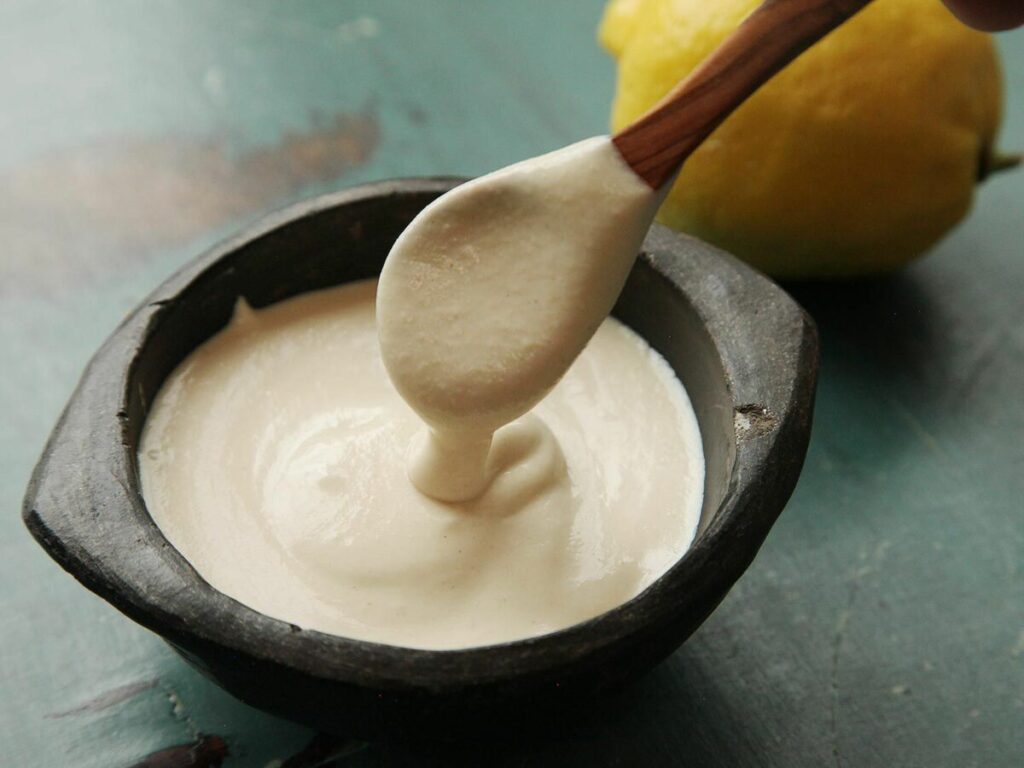
Tahini Raw or Roasted – Which Is Healthier for You?
Tahini is a staple in kitchens worldwide, offering a creamy, nutty flavor that enhances both savory and sweet dishes. But when it comes to tahini, raw or roasted, which is healthier, the debate continues. Does roasting affect the nutritional value? Does raw tahini retain more benefits? Let’s break it down and find out which option best suits your health goals.
First, What Is Tahini?
Tahini is a smooth paste made from ground sesame seeds. It’s a key ingredient in Middle Eastern and Mediterranean cuisines, used in hummus, dressings, and desserts. But not all tahini is the same—some are made with raw sesame seeds, while others undergo roasting before being processed into a spread.
Understanding the Raw and Roasted Tahini Difference
What Is Raw Tahini?
Raw tahini is made from unroasted sesame seeds, giving it a lighter color and a more delicate, slightly bitter taste. Since the seeds are not exposed to heat, it retains more of its original enzymes, minerals, and antioxidants. This means it’s often the preferred choice for those looking for the most natural version of tahini.
What Is Roasted Tahini?
Roasted tahini is made by lightly toasting sesame seeds before grinding them into a paste. This process enhances the flavor, creating a deeper, nuttier taste and a darker color. The heat from roasting alters the composition slightly, but does it make a big difference in health benefits? Let’s compare.
Nutritional Differences: Tahini Raw or Roasted – Which Is Healthier?
Calories & Macronutrients
Both raw and roasted varieties contain nearly identical calorie counts. A one-tablespoon serving typically has around 90 calories, 8 grams of fat, 3 grams of protein, and 3 grams of carbohydrates. While roasting doesn’t significantly change these macronutrient values, it can impact other aspects of nutrition.
Vitamins & Minerals
Raw or unroasted tahini often contains slightly higher amounts of calcium, magnesium, iron, and phosphorus, which are essential for bone health and energy production. However, roasting can break down some of these nutrients, reducing their bioavailability.
Antioxidants & Health Benefits
Sesame seeds are rich in lignans and sesamin, natural compounds with antioxidant properties. The unroasted version retains more antioxidants since these compounds can degrade under high temperatures. That said, the roasted option still contains a good amount, making both options beneficial.
Health Benefits of Raw vs. Roasted Tahini
Gut Health
Gut Health
Unroasted version contains more active enzymes that support digestion and gut health. The heat from roasting may reduce enzyme activity, but roasted variety is still a good source of fiber and healthy fats that aid digestion.
Heart Health
Both raw and roasted tahini contain healthy monounsaturated and polyunsaturated fats, known for supporting heart health by reducing bad cholesterol levels. Unroasted may have a slight advantage due to its higher antioxidant content.
Which One Retains the Most Essential Fatty Acids?
Roasting can slightly alter the structure of essential fatty acids, potentially reducing their effectiveness. Raw tahini may be the better choice if you’re looking for maximum Omega-6 fatty acid retention.
Cooking & Usage: When to Use Raw vs. Roasted Tahini?
Best Uses for Raw Tahini
Unroasted tahini works best in:
- Salad dressings
- Smoothies and shakes
- Drizzled over grain bowls or yogurt
Best Uses for Roasted Tahini
Roasted tahini pairs well with:
- Hummus and dips
- Tahini-based sauces for roasted vegetables or meats
- Baking and desserts
How Roasting Affects Shelf Life
One crucial factor to consider when choosing between raw and roasted tahini is shelf stability.
- Raw Tahini: Since raw sesame seeds retain more of their natural oils and enzymes, this variation has a shorter shelf life and can become rancid faster if not stored properly. Keeping it refrigerated helps maintain freshness.
- Roasted Tahini: The roasting process removes some of the natural moisture, making it less prone to spoilage and extending its shelf life compared to the unroasted variety. This makes roasted versions a more convenient option for those who don’t consume it frequently.
Which Tahini Should You Choose? Final Verdict
If you’re looking for maximum nutritional value, raw tahini edges out as the healthier option due to its higher mineral content and antioxidant levels. However, if you prioritize flavor and versatility, roasted tahini is an excellent choice. Ultimately, the best option depends on your dietary needs and taste preferences.
FAQs on Tahini Raw or Roasted
Does roasting tahini remove nutrients?
If you’re looking for maximum nutritional value, raw tahini edges out as the healthier option due to its higher mineral content and antioxidant levels. However, if you prioritize flavor and versatility, roasted tahini is an excellent choice. Ultimately, the best option depends on your dietary needs and taste preferences.
Does raw tahini taste different from roasted tahini?
Yes. Raw tahini has a milder, slightly bitter taste, while roasted tahini has a nuttier, more pronounced flavor.
Which tahini is best for weight loss?
Both raw and roasted tahini have similar calorie counts. However, raw tahini may be better for weight loss due to its higher fiber content, which helps you feel full.
Where to Buy High-Quality Tahini?
For high-quality tahini that retains the best flavors and nutrients, Mighty Sesame Co. offers both organic raw tahini and whole-seed roasted tahini. Whether you prefer raw for its nutritional benefits or roasted for its deep flavor, Mighty Sesame provides top-tier sesame products to elevate your meals.
Some Final Thoughts..
So, when it comes to tahini, raw or roasted, which is healthier, the answer depends on your personal health goals and taste preference. If you prioritize maximum nutrient retention, raw tahini is your go-to. But if you love a rich, nutty taste, roasted tahini is the way to go.
Try both and decide for yourself! Check out Mighty Sesame Co.’s tahini products and add this nutritious powerhouse to your kitchen today!